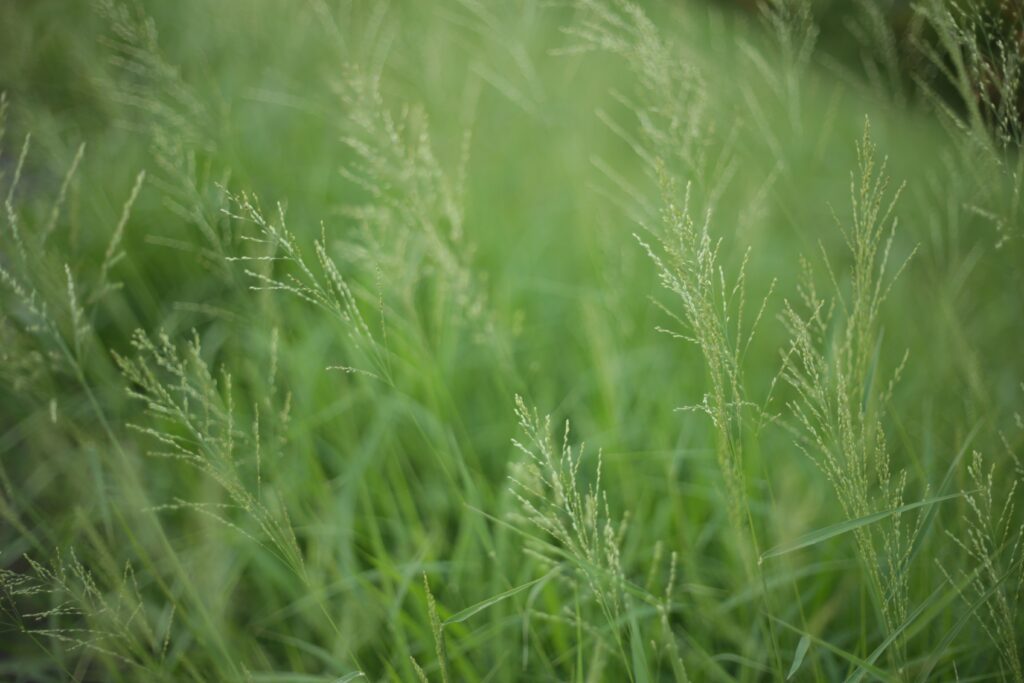- About
- Services
- Locations
- Resources
- Contact
Your yard is an extension of your home! That’s why you have chosen your landscape design with care, and possibly even hired a professional to help you with maintenance. After working so hard to transform your property into an attractive outdoor space, don’t let dandelions, clover patches, or other weeds overrun your yard!
A weed is any plant that grows where it is not intended to be. Seeds from weeds float on the wind, landing in your lawn and garden and creeping up undetected. For your yard to stand a chance against weeds, it must be healthy, and weed removal must be thorough.
To combat existing weeds and prevent them from returning, a comprehensive weed-management program is necessary. But to destroy weeds before they ruin your beautiful lawn, you need to have a basic understanding of the most common weed types.

Broadleaf, grassy, or grass-like are the three main categories of lawn weeds. As the name implies, broadleaf weeds are perennials with relatively broad leaves. The leaves of broadleaf weeds have one main vein with smaller veins branching out from it.
You’re probably most familiar with this category of weed, as it includes clover and dandelions. Chickweed, dollarweed, henbit, ground ivy (creeping Charlie), oxalis, plantain, and thistle are also broadleaf weeds.
Capable of generating 150,000 seeds per plant, per season, grassy weeds are an annual summer grass that germinates throughout the season. Think crabgrass, foxtail, and quackgrass.
Grassy weeds are not as easily identifiable, as they are similar to grass in appearance, growing one leaf at a time like the grass in your yard. With small, inconspicuous flowers, grassy weeds have narrow leaves with parallel veins and stems that tend to be round, and visible bulges (nodes) where the leaves attach. Grassy weeds are typically hollow, except at these nodes.
Sedges are a type of weed that is typically found in moist soils and shallow water. These perennial plants usually grow in thick clusters, and reach up to 4 feet high. Although sedges resemble grass in appearance, you can differentiate them from your grass by their triangular or tube-like, hollow leaves. Nutsedge, wild garlic, and wild onion all fall into the sedge category of weeds.
The best way to control weeds is to grow a durable, healthy lawn by feeding it regularly, watering it deeply, and practicing optimal mowing to ensure that your lawn does not become stressed out.
To stop weeds before they start to grow, feed your lawn regularly by applying a product that both fertilizes and kills weeds when they are actively growing in late spring and early summer. Continue to feed your yard a lawn fertilizer every 6 to 8 weeks during the growing season. Apply a weed killer again in the early fall to keep your lawn dense, making it less inviting to weeds by leaving little space for them to grow.
If it is the right season for fertilizing your lawn, you can purchase a formula that kills clover, dandelion, and other tenacious broadleaf weeds while feeding and thickening your lawn. If it’s not time to fertilize your lawn, you can control weeds with a product strictly for weed-control. The experts at Ware Landscaping, can help you determine whether you need a product that both fertilizes and kills weeds, or not.
We recommend the use of treatments that are non-toxic, such as the organic products we use. Our services and treatments are always free of the dangerous compounds often found in conventional fertilizers, pesticides, and other lawn care measures.
Like all plants, weed seeds need sunlight to sprout. Mowing at a taller height enables your grass to grow tall and thick. This denser grass will shade the soil and make weed seeds less likely to sprout and grow.
To encourage healthy root growth and maximize resistance to disease and insects, choose one of the two highest settings on your mower and mow at the recommended mowing height for the type of grass in your yard.
Mow based on grass growth, not your calendar. In a single mowing, remove about one-third of the length of the grass blades. If you need help timing your mowing, schedule a mowing service with Ware Landscaping.
When it comes to proper watering, an average lawn requires the equivalent of one inch of rainfall weekly. This amount enables deep penetration of moisture for grass that is healthy enough to beat the weeds.
Frequent waterings promote shallow root growth, which makes your lawn more susceptible to struggling during periods of drought and heat. This results in bare, thin spots that are conducive to weed growth.
To encourage healthy, deep root growth, water your lawn once or twice each week. As your lawn develops deep roots, it can grow thicker, crowding out weeds. For an extra boost, you can also give your lawn aeration or dethatching.
To make your lawn weed-proof, implement a weed management program of feeding, watering, mowing, and weed removal by hand or with treatment.
Since broadleaf weeds spread through seeds that germinate all year long, the best approach is feeding your lawn nutrients combined with weeding by hand or with a formula to effectively get rid of this weed type.
Grassy weeds spread both through seeds and lower pieces of stem taking root. To prevent the spread of annual grassy weeds, apply a combination of crabgrass preventer and fertilizer in the spring when the seedlings are most vulnerable, so they don’t become a problem in the summer.
Sedge weeds can spread through rhizomes and seeds but spread primarily by nutlets (underground tubers). To fight sedges, pull them up by hand, or use a weed-killer treatment. Proper weed management works to stop seeds and nutlets from germinating and rids your lawn of any that sneak in.
To discourage weeds in your lawn and garden, a thorough and well-timed weed management program is suggested.
If you have taken all the proper measures to keep weeds out of your yard and still find that they are taking over, it’s time to get aggressive about weed removal.
You can begin by hand-pulling annual weeds like crabgrass and chickweed that have shallow roots. Perennial weeds like dandelion and thistle can be hand-pulled when they are young, and the soil is moist, but there is a narrow window for this approach to weed removal. Perennial weeds quickly develop extensive roots, making them harder to remove.
If weeds are few and far between, targeting spots in your lawn is another option. For weeds that are actively growing, but small, treat them with a post-emergent herbicide.

A lot of people enjoy tending to their property. If you do take weed management into your own hands, be sure to check the labels of weed-control products to ensure that they can be used on your specific grass type without harming your lawn.
Many of us take on all of the upkeep of our lawn and garden, only to realize that it involves more labor, time, and money than we planned for. Creating a lawn that is lush and green requires a great deal of work, and it’s frustrating to spend all that time removing weeds only to have them grow back.
Or worse, realizing that the formula you used to destroy the weeds also destroyed your healthy grass. Imagine pouring a lot of time and hard work into weed control only to watch your lawn suffer and the weeds thrive!
Most home or business owners don’t have the equipment, experience, or time to identify and maintain the best weed management program for their lawn and garden.
Weeds will grow back sooner than later if you neglect to take the proper steps or invest the time required for weed management. By opting to hire a landscaping company to handle weed prevention and removal, you can save yourself the stress, time, and energy that doing all the weeding yourself will demand.
At Ware Landscaping, our experienced, hard-working team of Naperville landscapers go beyond merely mowing the lawn occasionally. We work hard to earn and maintain a reputation among our customers as professionals who are committed to optimizing the beauty and functionality of every yard we care for.
For over a decade, founder Mike Ware and his team have provided landscaping expertise, creating and maintaining beautiful outdoor living spaces in the Naperville area.
Choosing our landscaping services means selecting timely, quality work from a family-owned and operated business committed to excellent customer service. The specialists at Ware Landscaping are here to handle all of your weed management needs, so you have the time and energy to enjoy your green, vibrant, weed-free lawn.
At Ware Landscaping, our mission is to make a difference in your family’s life by developing and maintaining stunning outdoor living spaces for you to enjoy. Businesses and homeowners in the city of Chicago, the surrounding suburbs, and Aurora, Naperville, and DuPage counties have trusted us for more than a decade to exceed their yard and landscaping needs.
If you are ready to make your dream yard a reality, call us at (630) 885-6370. Contact us today to learn more about our services!